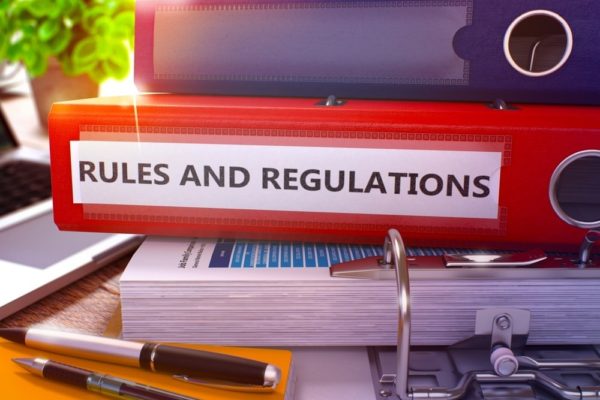
By: Michael Manley
 Culture is defined as a way of thinking, behaving or working that exists in a place or organization (such as a business). Firm culture has long been a target of regulators of the financial services industry as the culprit in many scandals. In that regard, in its 2016 Regulatory and Examination Priorities Letter, the Financial Industry Regulatory Authority (FINRA) again identifies firm culture as the cause of systemic breakdowns in the financial services industry. FINRA Chairman and CEO Richard Ketchum states: “Nearly a decade after the financial crisis, some firms continue to experience systemic breakdowns manifested through significant violations due to poor cultures of compliance.” Chairman Ketchum, however, clarifies that “(o)ur goal is not to dictate a specific culture,” but rather links firm culture to effective compliance and risk management.
Culture is defined as a way of thinking, behaving or working that exists in a place or organization (such as a business). Firm culture has long been a target of regulators of the financial services industry as the culprit in many scandals. In that regard, in its 2016 Regulatory and Examination Priorities Letter, the Financial Industry Regulatory Authority (FINRA) again identifies firm culture as the cause of systemic breakdowns in the financial services industry. FINRA Chairman and CEO Richard Ketchum states: “Nearly a decade after the financial crisis, some firms continue to experience systemic breakdowns manifested through significant violations due to poor cultures of compliance.” Chairman Ketchum, however, clarifies that “(o)ur goal is not to dictate a specific culture,” but rather links firm culture to effective compliance and risk management.
FINRA asserts that it will assess five indicators of a firm’s culture:
- whether control functions are valued within the organization,
- whether policy or control breaches are tolerated,
- whether the organization proactively seeks to identify risk and compliance events,
- whether immediate managers are effective role models of firm culture and
- whether subcultures that may conform to overall corporate culture are identified and addressed.
In February of 2016, FINRA released its “culture survey” to members of the brokerage industry, in which it defined “firm culture” as “the set of explicit and implicit norms, practices and expected behaviors that influence how employees make and carry out decisions in the course of conducting the firm’s business.” FINRA’s Culture Survey requests the following eight categories of information:
- A summary of the key policies and processes by which the firm establishes cultural values. In the summary, include whether this is a board-level function at your broker-dealer or at the corporate parent of the firm. If it is a board-level function, describe the board’s involvement. Also, provide a description of any steps you have initiated or completed in the past 24 months to promote, strengthen or change your firm’s culture.
- A description of the processes employed by executive management, business unit leaders and control functions in establishing, communicating and implementing your firm’s cultural values. Include a description of how executive management communicates, promotes and establishes a “tone from the top” as it relates to cultural values (to the extent not covered by the previous question). Include a description of the firm’s approach to ensure that its cultural values are adopted and applied by middle management.
- A description of how your firm assesses and measures the impact of cultural values (to the extent assessments and measures exist) and whether they have made a difference at your firm in achieving desired behaviors. Provide a summary of the policy statements, procedures, mission statements or other related documents that reflect your firm’s assessments and measures.
- A summary of the processes your firm uses to identify policy breaches, including the types of reports or other documents your firm relies on, in determining whether a breach of its cultural values has occurred. Please focus your summary on those activities your firm considers to be directly related to reinforcing its culture.
- A description of how your firm addresses cultural value policy or process breaches once discovered. What efforts are used to promptly address these policy or process breaches? What is the escalation process to surface and resolve such breaches?
- A description of your firm’s policies and processes, if any, to identify and address subcultures within the firm that may depart from or undermine the cultural values articulated by your board and senior management.
- A description of your firm’s compensation practices and how they reinforce your firm’s cultural values.
- A description of the cultural value criteria used to determine promotions, compensation or other rewards. Describe opportunities for promotion to the managing director or equivalent level available to personnel of your compliance, legal, risk and internal audit functions.
At FINRA’s Annual Conference in May of 2016, Chairman Ketchum reinforced the message: “I can say unequivocally that firm culture has a profound influence on how a securities firm conducts its business. I can’t count the number of times throughout my career where a culture that doesn’t value ethical behavior has led to compliance failures for a firm and significant harm to investors.” He further identified three behaviors for exploration that will inform FINRA’s understanding of the issues: groupthink, the winner-takes-all culture and the importance of tone from the top. Chairman Ketchum pointed out that FINRA counts “culture as a factor that influences a firm’s risk profile” and may influence the “probability or severity of an enforcement action.”
These themes should be familiar. Tone at the top, a culture of compliance, ethical behavior and conflicts of interest management have been part of the industry and regulatory dialogue for many years. Here is the news: the evolution from a focus on “culture of compliance” to a survey and evaluation of firm culture is a significant development in the regulatory landscape. In his remarks, Chairman Ketchum points to the application of research by behavioral scientists “to understand how and why honest people do dishonest things.” For the first time, regulatory oversight may include behavioral psychology in its calculus, not only for individuals, but also for institutions. Is this a logical extension of prior learning, or is it a brave new world where regulators boldly go?
Chairman Ketchum cautions that “it isn’t FINRA’s goal to prescribe the culture for the industry or to determine the values a firm and reps should have.” However, it is clear that FINRA and other regulators will utilize the results of this culture survey to inform regulatory oversight and their mission in protecting investors. Are there clues to facilitating good firm culture? Sure – A few of these are highlighted in Chairman Ketchum’s remarks:
- Clear and consistent institutional messages regarding professional ethics;
- Diligent analysis, effective controls and comprehensive monitoring of behavior;
- Careful evaluation of human capital to avoid or control the introduction of what Chairman Ketchum refers to as “negative culture carriers”; and
- Thoughtful review of potential conflicts associated with a firm’s compensation system.
Nonetheless, there will be more to this story as the results of FINRA’s culture survey are digested and communicated to the market.
So can firm culture be regulated? Commentators differ on how they view culture and its impact on firm behavior. In fact, some current and former CEOs “say that culture isn’t something you ‘fix’,” and it raises a question of whether culture is an outcome rather than a cause. In either event, firm culture is likely to be an increasing focus of regulators of the financial services industry. Working together, industry participants can achieve the shared goal of protecting investors. It is paramount that firms proactively participate in the discussion of “firm culture” and contribute to meaningful guidance that will allow for objective, risk-based analysis and improvement. Otherwise, regulation of “firm culture” could morph into feelings versus facts.
 Michael Manley is a partner at Venable and previously served as general counsel, Chief Compliance Officer and Secretary for CĪON Investment Management, LLC, a registered investment adviser and CĪON Investment Corporation, an externally managed, non-traded, business development company.
Michael Manley is a partner at Venable and previously served as general counsel, Chief Compliance Officer and Secretary for CĪON Investment Management, LLC, a registered investment adviser and CĪON Investment Corporation, an externally managed, non-traded, business development company.
Mr. Manley was responsible for developing and implementing comprehensive compliance programs, including establishing corporate charters, corporate governance policies and various policies and procedures regarding code of ethics, insider trading, custody and SEC disclosure. He also negotiated agreements with swap counterparties, custodians, consultants, insurers and other fund providers. Additionally, Mr. Manley served as general counsel, chief compliance officer and secretary for both CĪON entities.
Mr. Manley previously worked at investment adviser Plainfield Asset Management and, as co-general counsel and chief compliance officer, managed the day-to-day legal and compliance affairs for Plainfield Direct, a business development company managed by Plainfield Asset Management.
Published by Conselium Executive Search, the global leader in compliance search.

